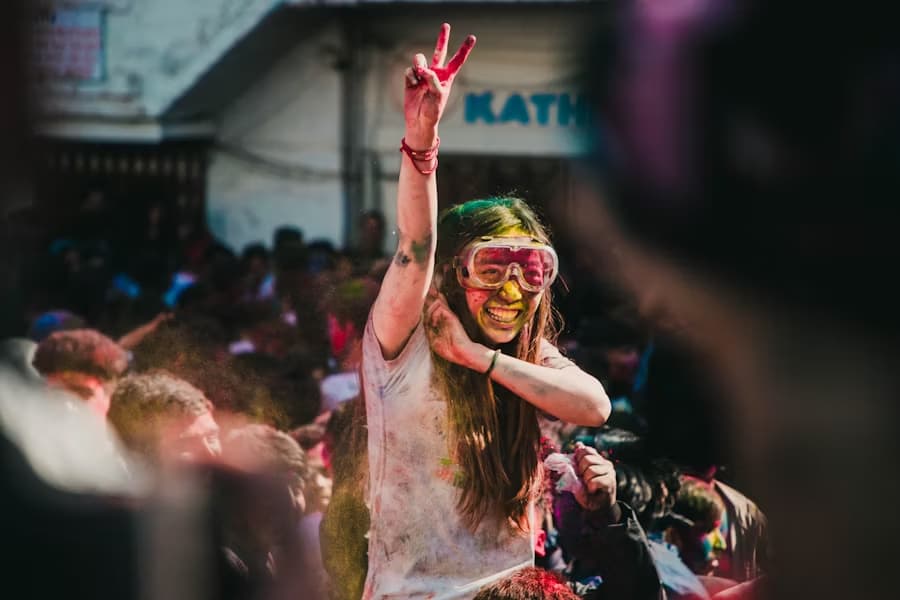Music festivals are events that bring together millions of people from all over the world. In recent decades, they have become not just concerts, but real cultural phenomena that influence the music industry, economy and social processes. Every summer, festivals bring together fans of a wide variety of genres, and these events have long gone beyond the usual concert experience. They have become important points of attraction where culture, art, and social interactions intersect. Just as European casinos offer a variety of entertainment for gambling enthusiasts, music festivals provide a unique platform to enjoy the arts and meet like-minded people, creating an atmosphere where everyone finds something to their liking.
The magic of music festivals: how the diversity of genres attracts millions of fans
One of the main reasons for the popularity of music festivals is their ability to attract audiences with a wide variety of musical preferences. This is important because music, like any other art form, is incredibly diverse, and each person is looking for something different. Here are a few aspects that make music festivals so unique:
- A wide range of genres: At major festivals you can hear everything from alternative rock to electronic music, hip-hop and classical. This attracts people with different musical tastes and allows everyone to find something for themselves.
- Discovering new musical directions: For example, Sziget Festival in Hungary is known for the fact that different styles such as indie, rock, electronic and folk can be played on the same stage. This makes the festival attractive to those who are not limited to one musical direction and are ready to discover new genres and artists.
- A chance to hear up-and-coming artists: Festivals often become a platform for newcomers who want to make a name for themselves on a larger scale. Coachella in the US, for example, often features young, up-and-coming performers who become real stars. This gives festival-goers a chance to keep abreast of new music trends and discover talented artists who may become mainstream in a few years.
International spirit and cultural exchange at music festivals
Contemporary music festivals excel at bringing together individuals from all over the world. Take Tomorrowland in Belgium, a premier electronic music event that attracts visitors from Europe, Asia, Africa, and both North and South America. Hosting over 180,000 attendees annually, it serves as a powerful emblem of international connection. These gatherings highlight music’s ability to bridge language, culture, and tradition, creating a collective experience that unites diverse crowds.
The international crowd at these festivals brings more than just varied nationalities—it introduces a rich tapestry of traditions, perspectives, and lifestyles. This diversity creates a dynamic environment for cultural exchange. European festivals, for instance, captivate visitors not only with their lineups but also by offering a window into the unique customs of different nations. Meanwhile, performers benefit from this vibrant mix, drawing creative inspiration from the audience’s varied reactions and energy, which can often surprise and delight.
These gatherings act as cultural melting pots, blending musical genres, fashion, lifestyles, and even cuisines. They serve as vital hubs in today’s interconnected world, encouraging open-mindedness and fostering meaningful cross-cultural dialogue.
Unique concepts and atmospheric locations
A defining feature of music festivals is their knack for crafting unique concepts and captivating locations that shape the overall experience. Today’s festivals transcend the standard concert format, delivering not just music but a rich blend of visual, artistic, and cultural elements that leave a lasting impression.
Key aspects of unique concepts and locations:
| Feature | Description |
| Integration with art | For example, Gamma in St. Petersburg combines music with contemporary art: installations, exhibitions and art objects create a multi-layered perception of the event. |
| Unique venues | Festivals often take place in unusual locations. For example, Rock am Ring in Germany takes place in mountainous landscapes, and the Montreux Jazz Festival at the foot of the Alps. |
| Use of technology | Modern festivals use new technologies to create visual and sound effects, and create themed areas for workshops and artwork. |
| Theme and atmosphere | Festivals create themed areas with colorful décor and light shows, turning the concert into a unique cultural experience. |

Social connections and the creation of new relationships
Music festivals are becoming not only a place to enjoy music, but also an important platform for creating new social connections. Here are a few key aspects:
- A socializing platform: Festivals open up a socializing space where participants can meet people with common interests, be it friendship or romance.
- Creating strong connections: This is where acquaintances are made that can develop into long-term relationships. Festivals become centers of social activity where people can find support among like-minded people.
- Social initiatives and volunteering: Festivals, such as Glastonbury in the UK, support charitable organizations and actively participate in environmental actions. This gives participants the opportunity not only to enjoy the music, but also to contribute to making the world a better place.
Technology and accessibility for all
Innovations in technology have transformed music festivals into globally accessible experiences. Through live streaming and social media, fans across the world can immerse themselves in the excitement from anywhere, powered by high-speed internet and mobile apps that deliver real-time broadcasts of major events.
Beyond broadening access, technology enhances the festival experience for attendees. Mobile apps provide convenient access to schedules, venue maps, safety updates, and direct communication with fellow festival-goers. Many events also incorporate cutting-edge features like virtual tours, augmented reality, and stunning visual effects, elevating the overall atmosphere.
Social media plays a pivotal role, allowing attendees to share their experiences through photos and posts while artists connect directly with their audience. This digital integration transforms festivals into global celebrations, enabling people everywhere to share in the joy and energy of the event.
